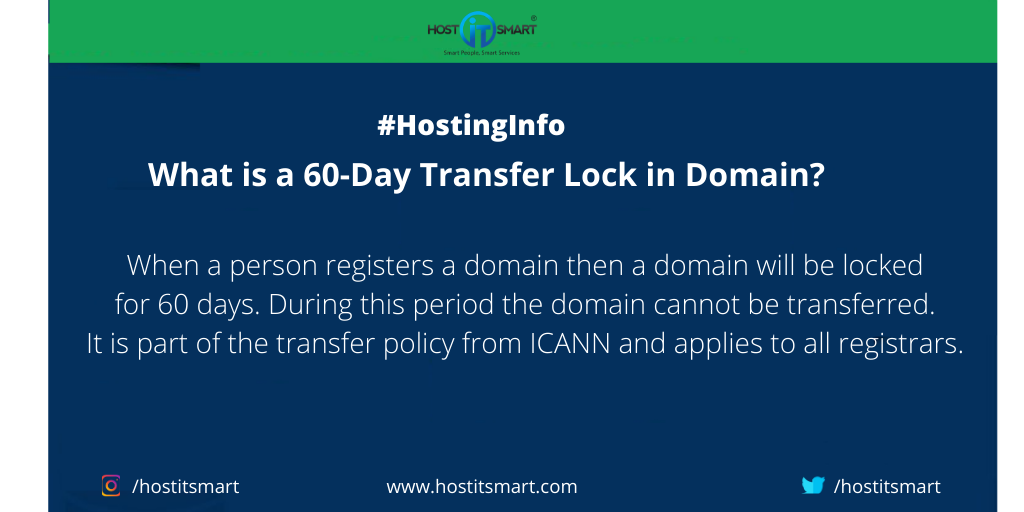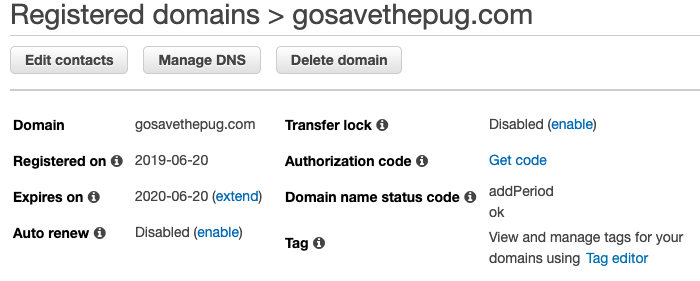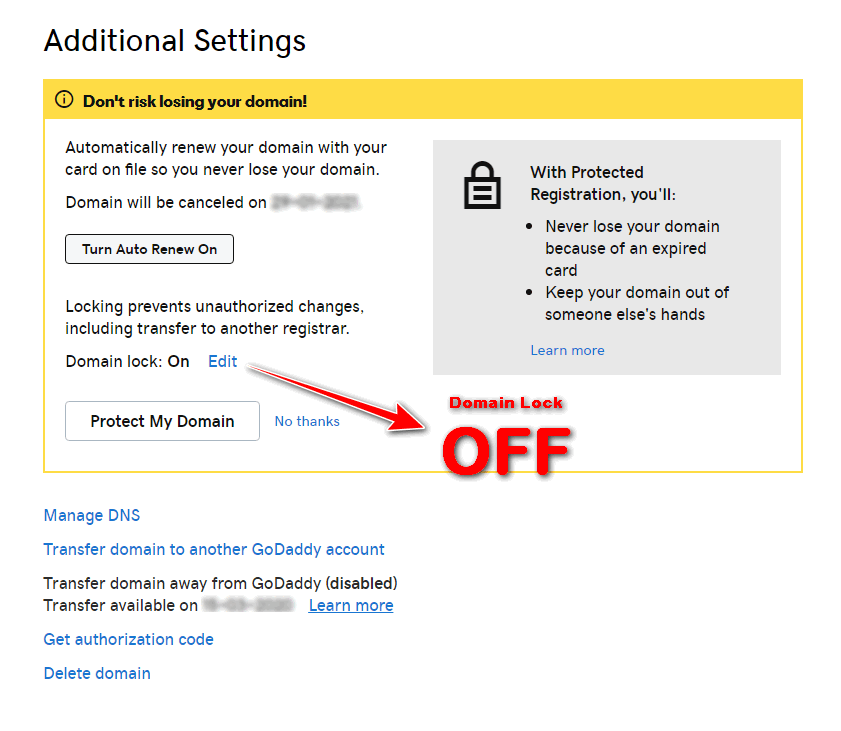Updating Contact Information Of A Registrant
ICANN has created a labyrinth of compounding rules regarding what are considered as material changes in contact and ownership information. To simplify the whole process, Webnames.ca will treat all contact information updates as material changes.
In addition to simplifying the process, ICANN has also allowed the use of designated agents to verify registrant updates. As a domain registrar, Webnames.ca offers our customers the option to use us as your designated agent.
Doing so allows us to approve and verify registrant changes on your behalf. This becomes necessary when old registrants contact information is no longer viable such as changing street addresses or changing an email.
In addition to approving updates, Webnames.ca can also:
- Grant approval of contact information updates
- Enter any necessary agreements on behalf of the new registrant
- Opt out of any domain locks which prevent transferring domain names to another registrar for a period of 60 days.
How Can I Opt Out Of The 60
You can choose to opt out of the domain transfer lock by making the following selections in the panel:
- The Edit Whois Info page opens:
- If you do not opt out of the domain 60-day transfer lock, the following warning message appears indicating that your domain will be locked once you save your changes. If you agree to the lock, check the box that indicates you understand these terms:
Review the following article for full instructions on how to transfer your registration away from DreamHost:
Changes In The Owner Details
When you change the registrant name, company or email address of a domain in the WHOIS, by default the domain will also be locked for 60 days.
In this case it is possible to opt out of the lock. You can select this during the owner change procedure. It is not possible to opt out, after the change has been processed.
Note: The 60 days lock only applies to generic top-level domains. Country-code top-level domains follow the policies that are decided by the local registry for that domain.
Related articles:
Recommended Reading: Domain Name Cost Per Year
Change Your Domain Lock Setting
A domain lock is a security setting that prevents unauthorized attempts to transfer your domain to another registrar. Google Domains locks your domain by default.
While your domain is locked, you can update your contact information and make other changes to your domain settings. However, if you want to transfer your domain, you must first unlock it.
The Rules Differ Depending On Each Tld

The application and scope of registrar locks vary quite massively. Some domain extensions are subject to a registrar lock, which occurs when an internet address is deleted. The affects gTLDs as well as many ccTLDs. Domain transfer locks can also be found with generic as well as country-specific TLDs. It usually doesnt matter whether you register an internet address from scratch or buy from the previous owner and have it transferred to your name. There are also exceptions here, just as the Montenegrin TLD example shows.
Furthermore, there are TLDs that are free from any lock-up periods. There is no one-size-fits-all rule, however you have to find out what conditions apply to which TLD. If you plan to change the internet service provider as soon as possible after acquiring a new domain, its best to check the exact lock periods before you purchase it. Generally, the provider or the responsible registrar can aid you further regarding this point.
Your very own .uk domain name!
Short, sharp, .uk. Claim your new domain name now!
Don’t Miss: How To Connect Godaddy Domain To Squarespace
Why Transfer To Domaincom
Domain.com is one of the leading registrars in the industry for a reason. We offer the ability to easily manage your domains from a single, user-friendly platform. We also offer a comprehensive set of features for all of your needs under a straightforward pricing structure, with fantastic customer service to boot.
How Will This Affect My Account At Dreamhost
DreamHost will leverage the designated agent policy option to implement this so that it’s as painless for you as possible.
As stated in the ICANN Transfer Policy , it allows an individual or entity that the ‘Prior Registrant’ or ‘New Registrant’ explicitly authorizes to approve a Change of Registrant on its behalf.
This means:
- DreamHost will act as your Designated Agent, to approve any changes.
- There will be an addition to DreamHost’s Domain Registrations Terms for this, as follows:
You authorize DreamHost to act as your Designated Agent to approve eachChange of Registrant on your behalf . Also, we will automatically implement a 60-day domain transferlock following a Change of Registrant per ICANNs new Transfer Policy.
Recommended Reading: Transfer Domain From Wix To Squarespace
How Long Are Specific Domains Blocked
The respective TLD registry determines how long a web address is locked no matter which provider or domain name registrar you registered the domain with.
TLDs are commonly divided into two main groups: generic top-level domains and country-specific top-level domains . There are differences between these two kinds of TLDs when it comes to domain transfer locks and lock-up periods after an address is deleted.
What Happens When A Domain Is Locked
A locked domain does not mean an inactive domain, because there are still some tasks you can perform.
For example, you can make changes to your domain settings and update your contact information despite your domain being locked.
But once itâs locked, itâs untransferable. So, if you want to transfer it, you must first unlock it.
How exactly do you do that? Weâll explain next.
You May Like: What Is A .io Website
What Does It Mean To Transfer A Domain Name
Transferring a domain name means changing the registrar with which your domain name is registered. If you have already tracked down and purchased that perfect domain name for your business or project, but find yourself displeased with the level of service provided by your current registrar, dont worry. Transferring your domain to a registrar that better suits your needs is a relatively simple process.
Why Are Domains Locked And How To Unlock Them
Security is a major issue in the online world and at every turn, there are measures in place to ensure legitimate users are protected. A locked domain is one such measure. Itâs intended to protect website owners from internet crooks by blocking any unauthorized attempt to transfer or alter your domain.
While some website providers allow registrants to manage the domain lock option, some automatically lock it as a way to substantially increase their users protection from unscrupulous people.
There are different types of domain and triggers for domain locks, which means that the method of unlocking it may differ based on the cause.
And, while you are able to unlock them in most cases, in other instances youâll have to turn to your webhosting provider or just wait it out.
In this post, weâll tell you when its necessary to lock your domain and where to seek help. Weâll also explain more about locked domains, their causes and solutions.
You May Like: How Much Does A Domain Cost
What Are The Benefits Of Transferring My Domain
- Easily manage all of your domains using our Domain Dashboard
- Use a single account to manage both your hosting and your domains
- Prevent your domains from expiring by using our automatic domain renewal service
- Add Domain Privacy + Protection to protect the personal information associated with your domains
- Contact us any time with our 24/7 customer support
- Get substantial savings over many other registrars
Unlock Multiple Domains At Once

After logging in, click on âDomainâ in the left navigation menu.
Make sure you are in advanced view by clicking âAdvanced Viewâ at the top of the domain table.
Check the boxes of the domains you want to unlock. You can also use search filters to narrow your list.
Click âConfigureâ in the menu that appears at the bottom of the screen, then click âTransfer Protectionâ.
Select âRemove transfer lockâ then click âSubmitâ.
Read Also: Buying And Selling Domains For Profit
What Is A Domain Transfer Lock
If your domain is under a domain transfer lock, you will be unable to transfer it. If your domain is transfer locked, it could be due to the following factors:
- Registrar Lock: This is an internal lock that we, your domain registrar, place on your domains in an effort to keep them from being transferred or moved to another account by anyone other than the owner.
- Recent Transfer: Newly transferred domains also cannot be transferred within 60 days of the original transfer, which puts them under a transfer lock. This also cannot be adjusted and is a part of ICANN policy.
Note: If you are setting any kind of transfer lock within your Dynadot account, this is referring to the first type of domain transfer lock listed above, Registrar Lock.
Why Can’t I Transfer A Domain Name I Just Registered To Another Registrar
There are certain situations that can prevent a domain name from being transferred to a different registrar, such as a new registration. Your registrar may deny a transfer request if the domain name is within 60 days of initial registration. Another situation is if the domain name is subject to a 60-day Change of Registrant lock. You cannot transfer a domain name to a different registrar within 60 days of making changes to the registrant name, organization or email address . At their discretion, some registrars may provide an option for you to opt-out of this 60-day lock period. However, this rule is in place for your protection against unauthorized transfers and the registrar does not have to offer this option. If your ultimate goal is to transfer the domain name, you may want to consider completing the transfer process before changing your contact information.
Registrars also have the option of denying a transfer request within 60 days from when you last transferred the domain name to a different registrar. You may have the option to change web-hosting providers instead of registrars to avoid the inter-registrar transfer process altogether. You may also update your domain name’s nameservers or change the hosting IP address assigned to your domain name. Check with your registrar and/or hosting provider to see what options you have.
You May Like: How Much To Purchase A Domain Name
Why Won’t My Domain Name Unlock
ICANN, the group that regulates the distribution of domain names, has a very strict rule that domain names cannot be transferred to another registrar within 60 days of the date they were registered or transferred to a new registrar. This is done to prevent fraud. Unfortunately, since this is an ICANN rule, and not a Name.com rule, there is no way we can remove the 60-day hold.
The good news is that you can fully use your site while the domain name is locked. Your hosting provider or website builder will give you either name servers or DNS records to point the domain name.
How Long Does It Take To Initiate A Transfer
Here is a bit of good news for you: completing a domain name transfer does not take long at all. If you take the time to sit down and stay on top of it, the steps you need to take can be completed in an hour or two. We recommend the process be completed in one sitting, when possible, for security purposes.
You May Like: How Much Does It Cost To Purchase A Domain
Why Do People Transfer Domain Names
There are plenty of reasons one might become disgruntled with ones current registrar and choose to switch to another. After all, not all registrars are created equal. Most will offer packages that include different features, with different prices and different levels of reliability. Some offer superior customer support, while other user interfaces are easier to navigate.
How To Unlock A Domain
Being equipped with all the knowledge about domain unlocking, the various types of lock and causes is pretty good. But, knowing how to fix the issues and unlock your domain is icing on the cake.
So, here is one quick way of unlocking your domain, in five simple steps.
With that, your domain should no longer be locked.
Note however, that depending on who your provider is, there may be a few differences in the name or description of the various buttons, etc. The process though is relatively the same.
Don’t Miss: How Much Do Domain Names Cost
How Do I Transfer My Domain Name To A New Registrar
If you wish to move your domain name from one ICANN-accredited registrar to another, you may initiate the transfer process by contacting the registrar to which you wish to transfer the name. Note that there are certain situations that can prevent a domain name from being transferred, such as if it is subject to a 60-day Change of Registrant lock. See FAQ #8 for more information. Absent any valid reasons a transfer request cannot be processed, the registrar will confirm your intent to transfer your domain name using the Initial Authorization for Registrar Transfer form. If you do not respond or return the form to the registrar, your transfer request will not be processed. Please note that as of 25 May 2018, if the gaining registrar cannot access registration data for a name subject to a transfer, then the gaining registrar is not required to obtain the Form of Authorization from the Transfer Contact.
Your current registrar must also verify your intent to transfer using the Confirmation of Registrar Transfer Request form. for more information on Transferring Your Domain Name.
I Want To Move My Domain Name To Someone Else

It is your right to transfer your domain name registration between registrars. If you wish to move your domain name from one ICANN-accredited registrar to another, you may initiate the transfer process by contacting the registrar to which you wish to transfer the name.
To transfer your domain name to another registrant, you can initiate a change of registrant by contacting your current registrar. Your registrar will then ask for your confirmation via a secure mechanism . You must provide your confirmation within the number of days set by your registrar or your transfer will not proceed. Once your registrar receives confirmation from you, they will process the transfer and notify you and the new registrant once the transfer is completed.
Also Check: Cost To Register Domain Name